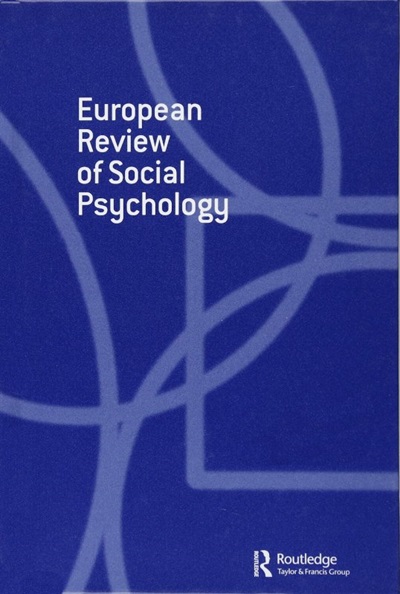疫情中的说服:来自精化可能性模型的见解
IF 7.8
2区 心理学
Q1 PSYCHOLOGY, SOCIAL
引用次数: 14
摘要
COVID-19缓解战略在很大程度上依赖于说服人们采取行为改变,因此了解如何使这种说服努力更有效至关重要。说服的精化可能性模型(ELM)允许将各种看似不同的效果集成到一个总体框架中。这可以预测哪些影响比其他影响更有可能导致随后的行为改变,并产生新的预测。我们回顾了最近的几项调查,这些调查涉及到有说服力的信息来源、信息本身的特征、接收者以及这些类别中变量之间的相互作用。每个调查都位于ELM框架内,并讨论了从ELM角度得出的未来方向。最后,分析了每一项研究对COVID-19说服性信息的影响,并提出了基于证据的建议。本文章由计算机程序翻译,如有差异,请以英文原文为准。
Persuasion amidst a pandemic: Insights from the Elaboration Likelihood Model
ABSTRACT COVID-19 mitigation strategies have largely relied on persuading populations to adopt behavioural changes, so it is critical to understand how such persuasive efforts can be made more effective. The Elaboration Likelihood Model (ELM) of persuasion allows for the integration of a variety of seemingly disparate effects into one overarching framework. This allows for prediction of which effects are more likely to lead to subsequent behaviour change than others and for generation of novel predictions. We review several recent investigations into persuasive effects of variables related to the source of a persuasive message, features of the message itself, the recipient, and interactive effects between variables across these categories. Each investigation is situated within the ELM framework, and future directions derived from the ELM perspective are discussed. Finally, the implications of each piece of research for COVID-19 persuasive messaging are unpacked and evidence-based recommendations are made.
求助全文
通过发布文献求助,成功后即可免费获取论文全文。
去求助
来源期刊

European Review of Social Psychology
PSYCHOLOGY, SOCIAL-
CiteScore
15.30
自引率
2.80%
发文量
6
期刊介绍:
The "European Review of Social Psychology (ERSP)" is a distinguished international journal that operates under the patronage of the European Association of Social Psychology. It serves as a platform for comprehensive, theory-driven reviews that cover the broad spectrum of social psychology. The journal is open to submissions from authors worldwide and is guided by a prestigious international editorial board.
ERSP is particularly interested in publishing reviews that reflect the author's own research program, as demonstrated by their publications in leading peer-reviewed journals. The journal values theoretical contributions that are grounded in a substantial empirical foundation, situating the research within the broader context of existing literature and offering a synthesis that goes beyond the individual articles.
In addition to these in-depth reviews, ERSP also welcomes conventional reviews and meta-analyses, further enriching the journal's offerings. By focusing on high-quality, evidence-based research, ERSP contributes significantly to the advancement of knowledge in social psychology and fosters a deeper understanding of human social behavior across cultures and societies.
 求助内容:
求助内容: 应助结果提醒方式:
应助结果提醒方式:


